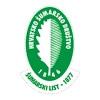
DIGITALNA ARHIVA ŠUMARSKOG LISTA
prilagođeno pretraživanje po punom tekstu
| ŠUMARSKI LIST 1-2/1966 str. 10 <-- 10 --> PDF |
4. Biology of the species and its variability. 5. Inheritance and environment. 6. Selection of trees in plantations. 7. Selection fcr wood quality. 1. INTENSITY (CRITERION) OF SELECTION The intensity (criterion )of selection can vary. When making a selection of plus trees of Loblolly Pine (Pinus taeda L.) Peev y (31) classified the individual characters by points. In order for a tree to be chosen, it had to achieve a definite minimum of points. According to Prokazi n (32. 33. 34), the selection of plus trees should be carried out in seed production areas where previously an inventory was made. Besides other characters, a plus tree should surpass in diameter b.h. the stand mean tree by over 1.1. According to Mat thew s (24) evaluation of trees can be performed a) by the descriptive method, b) by the method of classification, and c) by the method of measurement. Usually all three methods are combined. The method of measurement is least affected by the subjectivity of the selectionist and therefore it should always be applied if possible. Requiring and practising intense selection is easier if we are concerned with characters which can be measured, rather than with those which are expressed in a descriptive manner. The intensity of selection may vary according to selection objectives. If selection is performed for one or two characters, the selection intensity can be more severe than if a greater number of characters are under consideration. Schreine r (36) recommends that selection be restricted to those trees which exceed the mean by two or three. M e r g e n (25), on the other hand, states that the selected tree should lei four standard deviations above the mean. If selection intensity is expressed in this manner, it is impossible to establish the same criterion for all important characters, because if the intensity is very severe for some properties as for instance cylindrical term and staightness of the stem, it will be impossible to select desirable trees. 2. DEVELOPMENT AND USE OF MATHEMATICAL INDICES IN THE SELECTION OF PLUS TREES Ander ss on (1) states that selection of plus trees has been performed so far on the basis of a relative estimate of the growth rate, stem form, saw- timber grade, wood quality, seed production and resistance. The criteria for plus trees are changing in different part of the world. They depend on the species and local conditions as well as the basis of selection. Selection of plus trees for superior production has sometimes been carried aut on the basis of estimated indices. Likewise, selection was based on a multitude of characteristics which were understandably related to the tree quality. Andersson states that it was possible to use progeny tests as a basis for the selection of plus trees only to a small extent. He further states that we need selection indices, as recommended by L u s h, in order to make the selection of trees more effective. For obtaining such selection indices it is necessary: (1) to have information about the additive genetic variance and inheritance of each characteristics, and (2) to test the genetic and phenotypic covariance between these characteristics. It is possible to achieve all this on the basis of specifically-planned progeny tests. |